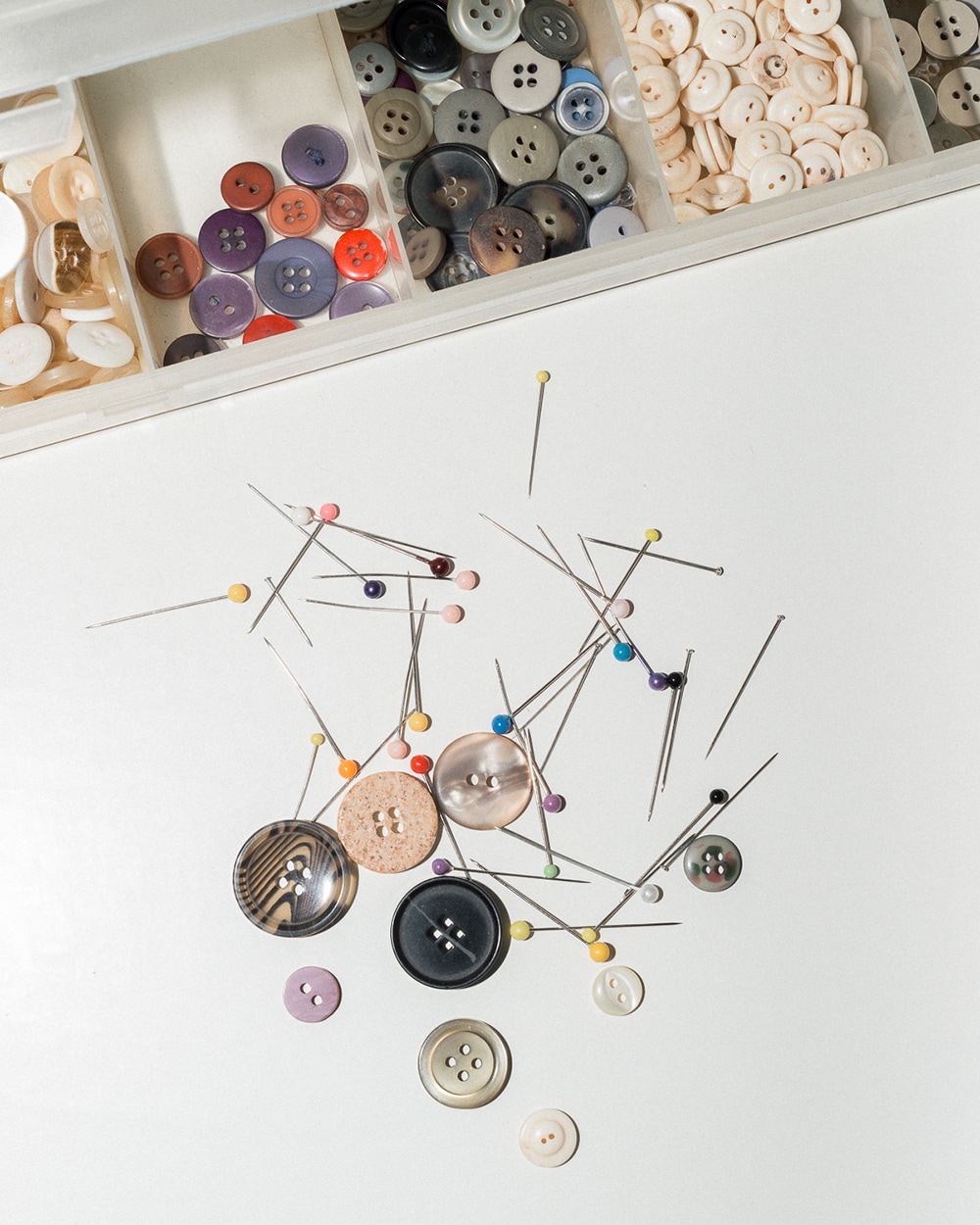Journal
Design for circularity.

Small changes, big impact
Engagement with garment circularity is essential. The fashion industry continues to send truckloads of textiles and clothing to landfills and incineration daily. Small changes can have a great impact. For example, by extending a garment’s life by 9 months, it’s estimated that we can reduce its water, waste, and carbon footprints by 20% to 30% each (WRAP, 2017).

Repairing may not be a word frequently associated with fashion. However, it can help to readdress the way we view the balance between consumption and disposal.At first, it might be a challenge for us to think of imperfections as opportunities. But, following the old saying that we can learn from our mistakes, a clothing item that needs fixing can be mended and become our favorite piece.

Strengthening the local community
In this way, we came up with a Repairing Index, which includes places around Lisbon where you can repair and extend your garments’ life while supporting local businesses. But, why did we create this Index in the first place?The recent pandemic time led us to reflect on the struggles faced by local and small businesses during unpredictable times.
As a Portuguese brand, we believe that by supporting local businesses, one isn’t just contributing to the workers’ livelihoods but also to the preservation of a cultural knowledge, economic sustainability and a sense of a supportive, caring and present community.

These are some of the reasons why we wanted to make such information accessible — because apart from following the care labels, there are other steps we can take to further increase our clothing lifespan and make this routine more circular. To find more tips about garment care and the importance of consciousness when purchasing clothes, check the “The importance of garment care” chapter of this series.
Take part
The Repairing Index, so far, only has local businesses around the Lisbon area specialized in fixing garments, given that it’s the city we’re most familiar with and where our studio is. But, our goal is to expand this Index for the rest of Portugal so that everyone can have easy access to these sorts of services and help more and more local businesses to thrive.
In the meantime, if you want to get involved in this process and share your knowledge about local businesses that focus on repairing, recycling, or donating clothing in Portugal, check this Google form.

Give it a chance
If you feel like trying to fix your garment on your own, we recommend checking out the Fixing Fashion project. It offers helpful tips and tutorials on how to customize and repair pieces that might just need a bit of care and attention. But if in the end, you find that the repaired piece is wearable again, but it no longer aligns with your style, consider sending it to a donation center, an upcycling project, a second-hand shop, or, lastly, to a recycling facility.

This is the last post of our "The Evolving Life Cycle of Apparel" series. We invite you to check out the other two posts, "The Importance of Garment Care" and "Wash, Wear, and Care — A Practical Guide", if you haven't already.We hope you liked and learned as much as we did for this research.
Was this information useful to you? Do you have any tips that you would like to share? Send us a message through our social media! We would like to hear it from you.